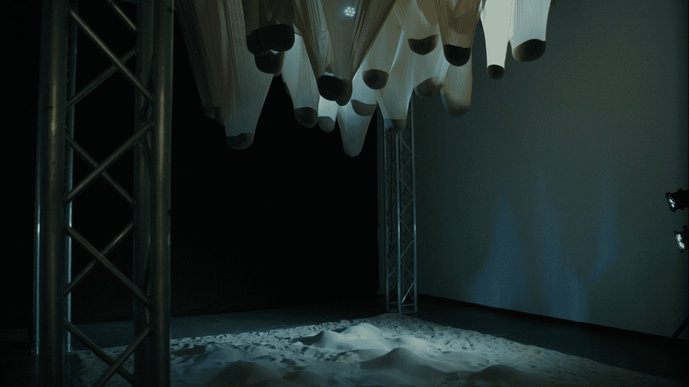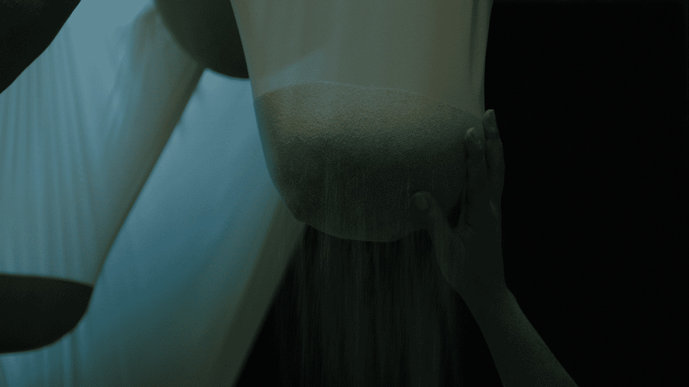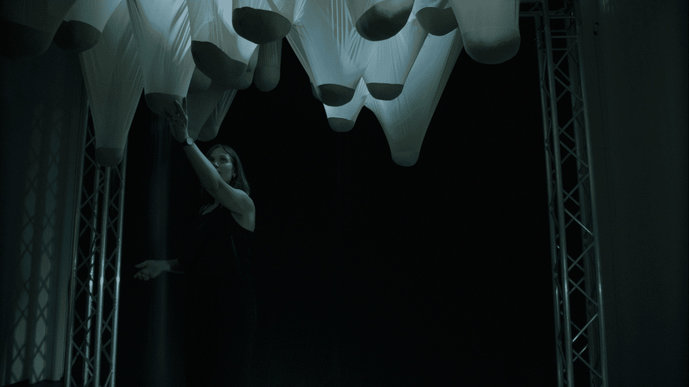

Filmstill, Photo: Dominic Thiel


Filmstill, Photo: Dominic Thiel


Filmstill, Photo: Dominic Thiel


Filmstill, Photo: Dominic Thiel


Filmstill, Photo: Dominic Thiel
A ton of sand: It is not of very much volume, but sand is just very heavy. Sand is a hidden component of numerous everyday products and as a resource it is of crucial importance. It is subject to an ever-increasing demand in industry. Its scarcity is hardly conceivable given the amount visible to us. Sand therefore has an inherent contradiction. The single grain is invisible; it is fine, light and intangible. And yet as a collective mass, sand is powerful, indestructible and solid.
The ghostly character of sand is highlighted in a spatial situation, resulting from the contradiction, the intangibility and the invisibility of the omnipresent material. The installation enables a direct encounter between human and sand. Visitors’ reactions to the raw material, their resulting movement patterns in the installation and the dependencies between the raw material as a material or object of emotional concept and its consumers are questioned.
The installation consists of a metal frame with four pillars. Fine mesh nylon fabric hangs at a height of three meters. The fabric is filled with dry quartz sand. Its sheer weight stretches the fabric and individual grains are released from the collective mass, falling to the floor as if through a sieve. On the floor, the grains of sand reunite to form a soft surface, its most renowned property becoming perceptible. The cloth bags are still heavily filled with sand after some time, but only by moving around in the room or on contact does the stream start again. The sculpture becomes something unpredictable and the contradictory character of sand described at the beginning becomes clear.
Tutors: Prof. Anja Dorn, Prof. Andreas Müller